TRI Data and Tools
The Toxics Release Inventory (TRI) Program tracks the industrial management of toxic chemicals that may cause harm to human health and the environment.
TRI data are reported by certain industrial and federal facilities. EPA makes these data available through multiple online tools, many of which add context to help make the reported data more understandable.
Click on the name of a tool in the categories below to get details and a direct link to that tool.
TRI Data as Reported by Facilities
- Envirofacts Form R Search
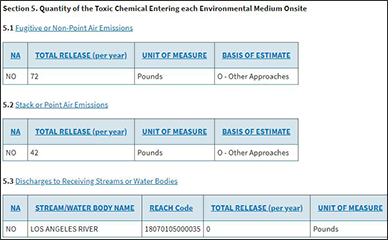
Description: Get a list of all TRI reporting forms submitted by a facility in its TRI history, and view forms for any of the reported chemicals.
Contents: Facility-reported data
Output: Facsimile of TRI reporting form
- Envirofacts Form R & Form A Download
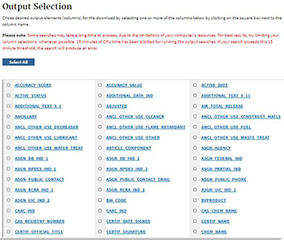 Description: Select and view specific data elements from the TRI Reporting Form R and Reporting Form A.
Description: Select and view specific data elements from the TRI Reporting Form R and Reporting Form A.Contents: Facility-reported data
Output: .csv files or .html tables
National Reports/Factsheets
- TRI Factsheets
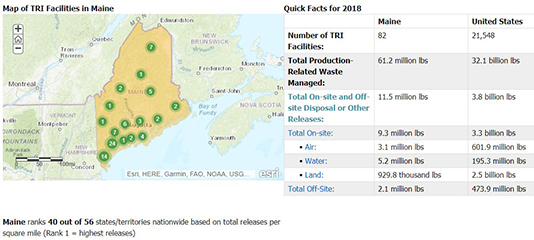
Description: Overview of TRI data for a location, industry sector, or chemical. Ideal for beginning TRI users. Also available in Spanish.
Contents: Facility-reported data and additional contextual information
Output: Printable factsheets
- TRI National Analysis
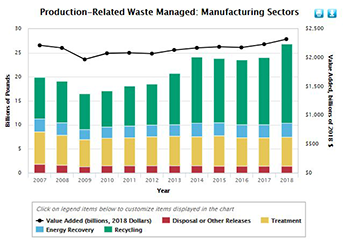 Description: An annual analysis of TRI data in a narrative and graphical format. Interactive maps, charts, and tables highlight national-level data, while factsheets detail specific geographic areas.
Description: An annual analysis of TRI data in a narrative and graphical format. Interactive maps, charts, and tables highlight national-level data, while factsheets detail specific geographic areas.Contents: Facility-reported data and additional contextual information
Output: Interactive web-based report; printable factsheets
TRI Tools for Most Users
- TRI Homepage Search
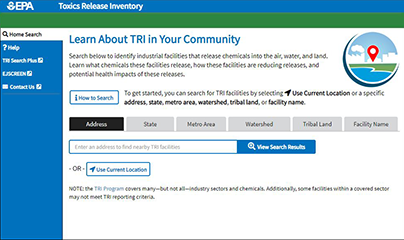 Description: Accessed from the bottom of the TRI homepage. Search for TRI facilities near an address or location or by facility name and see summary-level TRI data for each one. Results include information on environmental releases, pollution prevention, and compliance and enforcement. Ideal for beginning TRI users and for use on mobile devices.
Description: Accessed from the bottom of the TRI homepage. Search for TRI facilities near an address or location or by facility name and see summary-level TRI data for each one. Results include information on environmental releases, pollution prevention, and compliance and enforcement. Ideal for beginning TRI users and for use on mobile devices.Contents: Facility-reported data and additional contextual information
Output: Search results organized into topic-based sections; customizable maps, tables and graphs; data downloads; printer-friendly summaries
- TRI Explorer
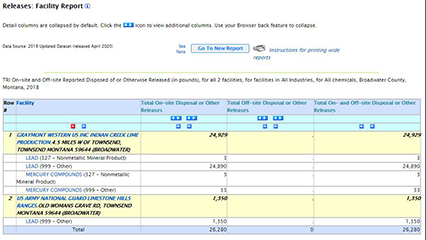 Description: Search by chemical, location, industry sector, or tribal land. Focus on chemical releases, waste transfers, or waste quantities. Also available in Spanish.
Description: Search by chemical, location, industry sector, or tribal land. Focus on chemical releases, waste transfers, or waste quantities. Also available in Spanish.Contents: Facility-reported data and additional contextual information
Output: Reports made up of sortable data tables (most include ability to drill down to a facility's individual reporting forms); spreadsheet-compatible .csv/.txt files, or results in PDF/Word versions
- Envirofacts TRI Search
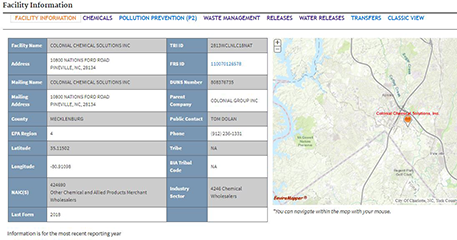 Description: Explore basic facility-level information for any facility that has reported TRI data since 1987. Search by by facility name, chemical, location, industry sector, or tribal land.
Description: Explore basic facility-level information for any facility that has reported TRI data since 1987. Search by by facility name, chemical, location, industry sector, or tribal land. Contents: Facility-reported data and additional contextual information
Output: List of facilities with links to view a detailed facility report, pollution prevention report, or risk-screening report for each one.
TRI Data and Tools for Advanced/Customized Analysis
- Basic Data Files
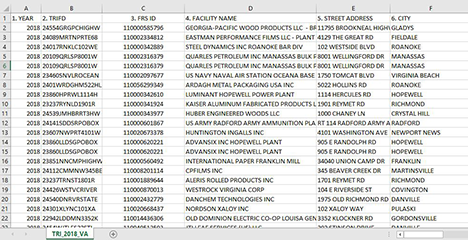 Description: Data for a reporting year contained in a single data file, for an individual state or the entire U.S. Each file contains the most commonly used data elements from the TRI reporting form. This is a simpler set of data, compared to the Basic Plus files. Recommended for users familiar with TRI data.
Description: Data for a reporting year contained in a single data file, for an individual state or the entire U.S. Each file contains the most commonly used data elements from the TRI reporting form. This is a simpler set of data, compared to the Basic Plus files. Recommended for users familiar with TRI data.Contents: Facility-reported data
Output: .csv files
- Basic Plus Data Files
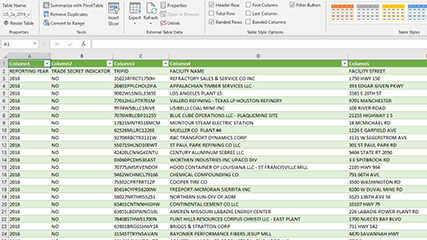 Description: Data for a reporting year for the entire U.S. Each .zip file is made up of 10 .txt files that collectively contain all data elements from the TRI reporting form (except Form R Schedule 1, which is available separately). Recommended for users familiar with TRI data.
Description: Data for a reporting year for the entire U.S. Each .zip file is made up of 10 .txt files that collectively contain all data elements from the TRI reporting form (except Form R Schedule 1, which is available separately). Recommended for users familiar with TRI data.Contents: Facility-reported data
Output: Tab-delimited .txt files compressed into .zip files.
- Envirofacts Customized Search
 Description: Create reports on multiple focus areas using a comprehensive set of TRI data elements. Of all the online TRI tools, this provides the most flexibility in building a search and choosing how results are organized. Recommended for users familiar with database querying.
Description: Create reports on multiple focus areas using a comprehensive set of TRI data elements. Of all the online TRI tools, this provides the most flexibility in building a search and choosing how results are organized. Recommended for users familiar with database querying.Contents: Facility-reported data
Output: .html table or .csv file
- Envirofacts EZ Search
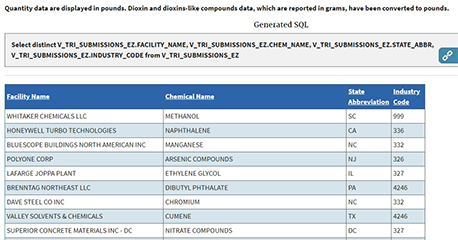 Description: Create reports on multiple focus areas. Offers the same extensive set of options for organizing results as the Customized Search, but with a simpler way to select focus areas. Data grouping and statistical functions available. Recommended for users familiar with database querying.
Description: Create reports on multiple focus areas. Offers the same extensive set of options for organizing results as the Customized Search, but with a simpler way to select focus areas. Data grouping and statistical functions available. Recommended for users familiar with database querying.Contents: Facility-reported data
Output: .csv files or html tables
Topic-Focused Data and Tools
- TRI Tribal Search (data for facilities on or near tribal lands)
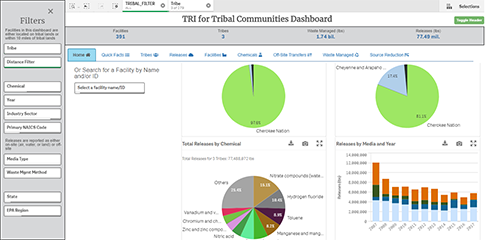 Description: Summary-level data about releases and other TRI-reported chemical waste management activities at facilities located on or within 10 miles of tribal lands.
Description: Summary-level data about releases and other TRI-reported chemical waste management activities at facilities located on or within 10 miles of tribal lands.Contents: Facility-reported data and additional contextual information
Output: Sortable tables; customizable charts and graphs
- TRI P2 Search Tool (pollution prevention)
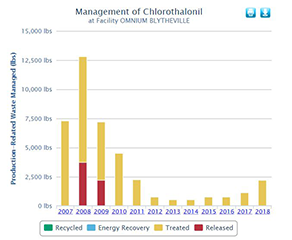 Description: Find and compare information about how TRI facilities and their parent companies manage chemical waste and work to reduce chemical releases into the environment. This tool offers a comprehensive look at the source reduction and waste management (i.e., releases, recycling, energy recovery and treatment) data reported by TRI facilities.
Description: Find and compare information about how TRI facilities and their parent companies manage chemical waste and work to reduce chemical releases into the environment. This tool offers a comprehensive look at the source reduction and waste management (i.e., releases, recycling, energy recovery and treatment) data reported by TRI facilities. Contents: Facility-reported data and additional contextual information
Output: Sortable tables; customizable charts and graphs
- TRI P2 Industry Sector Dashboard (pollution prevention)
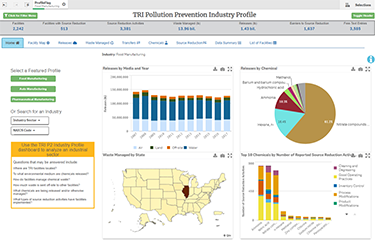 Description: Filter pollution prevention and waste management data for specific industry sectors, based on TRI-reported data.
Description: Filter pollution prevention and waste management data for specific industry sectors, based on TRI-reported data.Contents: Facility-reported data and additional contextual information
Output: Charts and graphs; presentation-ready graphics
- Enforcement and Compliance History Online (ECHO) (facility compliance)
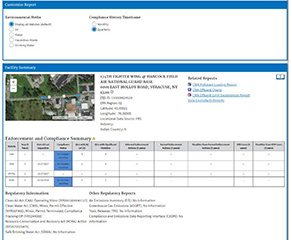 Description: Enforcement and compliance information for TRI and other EPA-regulated facilities. Not managed by the TRI Program.
Description: Enforcement and compliance information for TRI and other EPA-regulated facilities. Not managed by the TRI Program.Contents: Data from multiple EPA programs and some non-EPA databases
Output: Detailed facility reports; data downloads
- DMR/TRI Comparison Dashboard (surface water discharges)
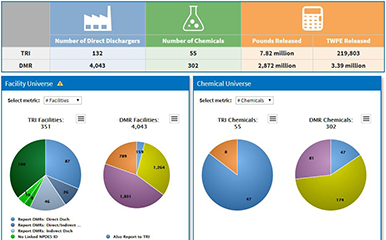 Description: Determine what pollutants are being discharged into waterways, and by which companies. Not managed by the TRI Program.
Description: Determine what pollutants are being discharged into waterways, and by which companies. Not managed by the TRI Program.Contents: Data from National Pollutant Discharge Elimination System (NPDES) and TRI
Output: Interactive charts and graphs; .csv files
- Risk-Screening Environmental Indicators (RSEI) (comparison of relative risk)
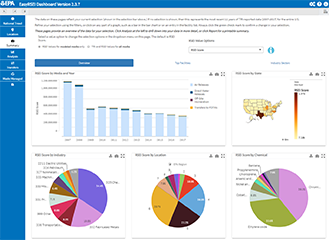 Description: Explore potential impacts of TRI-reported chemical releases on relative risk and compare them for different chemicals, locations, facilities, and reporting years. (Note: the "GO" button below links to EasyRSEI. For more information and other RSEI products, visit the main RSEI website.)
Description: Explore potential impacts of TRI-reported chemical releases on relative risk and compare them for different chemicals, locations, facilities, and reporting years. (Note: the "GO" button below links to EasyRSEI. For more information and other RSEI products, visit the main RSEI website.)Contents: Facility-reported data and additional contextual information and data sources
Output: Numeric scores; presentation-ready graphics; data downloads
- TRI-CHIP (toxicity of TRI chemicals)
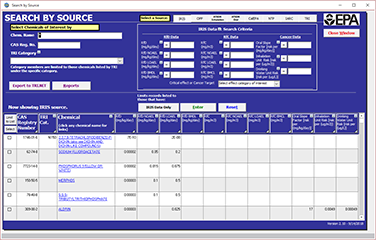 Description: Access and analyze toxicity information for TRI-covered chemicals through this downloadable Microsoft Access database.
Description: Access and analyze toxicity information for TRI-covered chemicals through this downloadable Microsoft Access database.Contents: Toxicity information from multiple sources
Output: Printable chemical toxicity profile reports
- Dioxin/TEQ Data Files (dioxin data and toxic equivalency values)
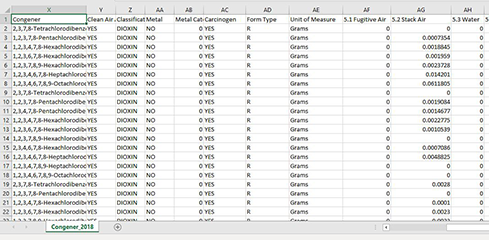 Description: Dioxin mass quantity data from the TRI reporting Form R Schedule 1, along with EPA-calculated Toxic Equivalency values. These files compliment the Basic and Basic Plus Data files. Note that dioxin data are already included in most other TRI tools. Recommended for users familiar with TRI data.
Description: Dioxin mass quantity data from the TRI reporting Form R Schedule 1, along with EPA-calculated Toxic Equivalency values. These files compliment the Basic and Basic Plus Data files. Note that dioxin data are already included in most other TRI tools. Recommended for users familiar with TRI data.Contents: Facility-reported data
Output: .csv files
- EnviroMapper (mapping various environmental data )
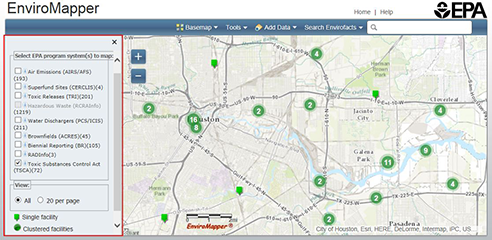 Description: Map environmental data and add points of interest to view the data in context. Not managed by the TRI Program.
Description: Map environmental data and add points of interest to view the data in context. Not managed by the TRI Program.Contents: Data from multiple EPA programs and GIS data
Output: Customizable GIS maps
